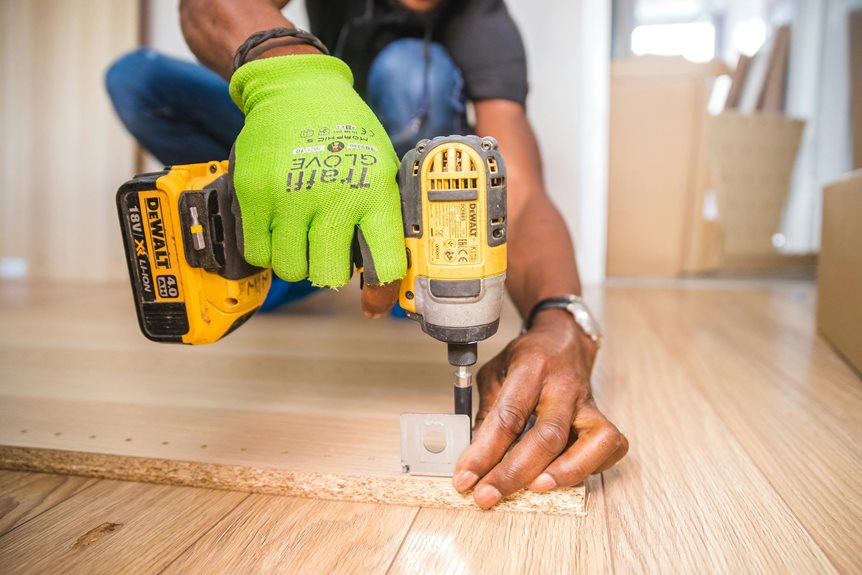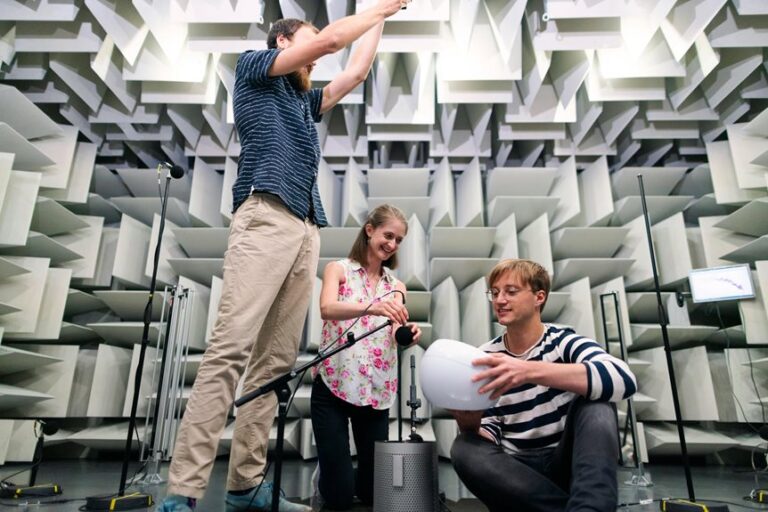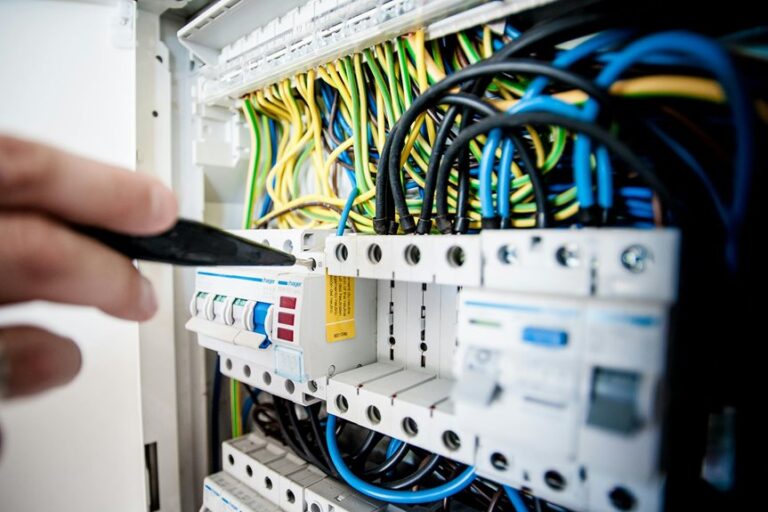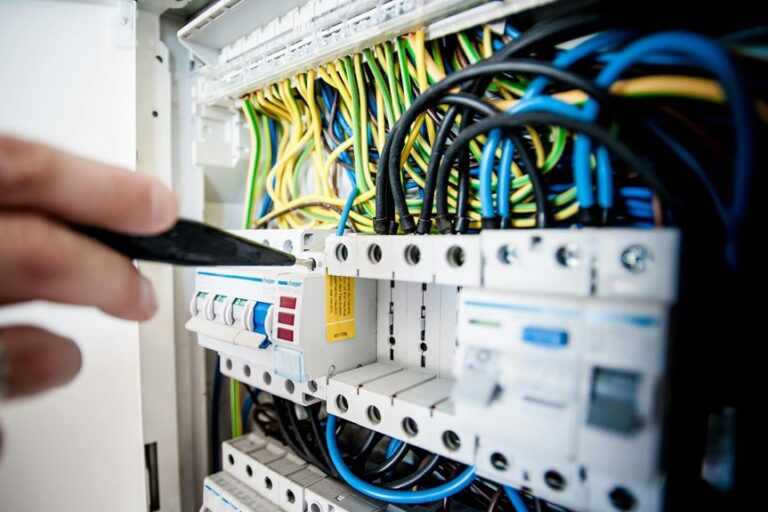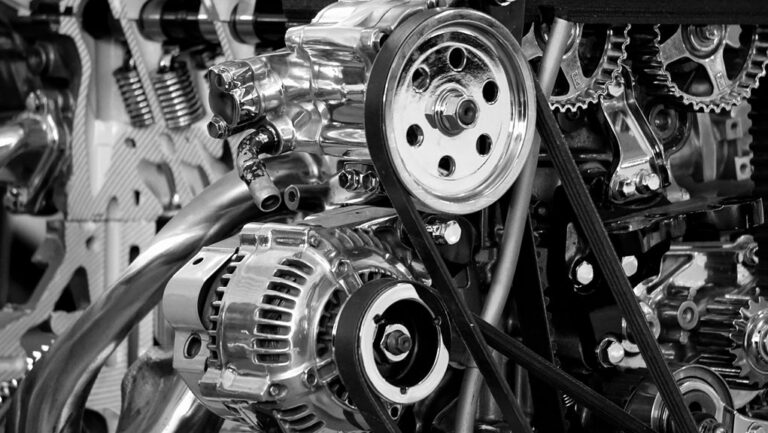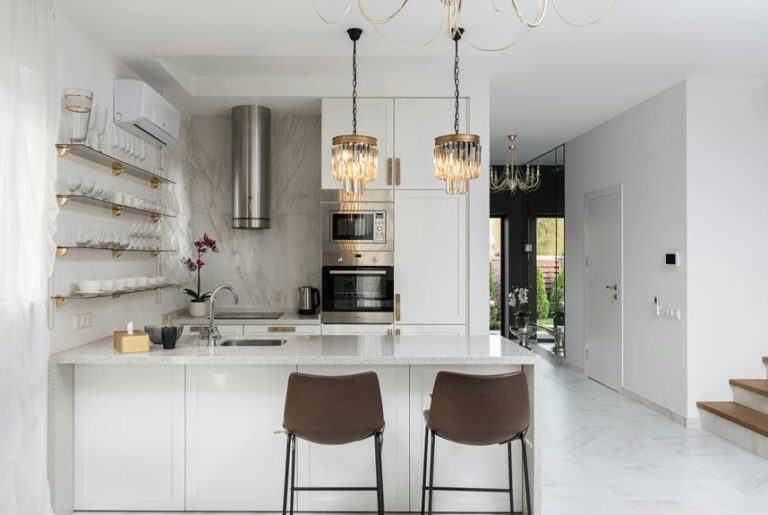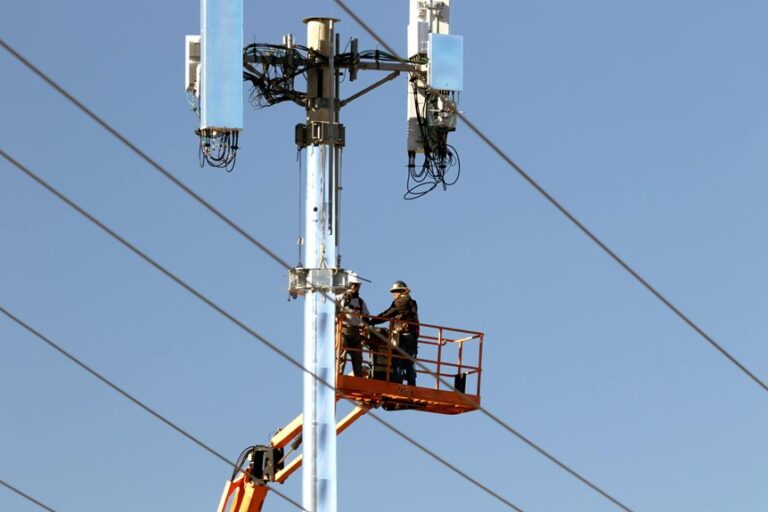When you're setting up a restaurant, the installation of your equipment can't be overlooked; it directly impacts safety and operational efficiency. You need to guarantee that everything is leveled correctly and adheres to manufacturer specifications to minimize risks. Understanding the nuances of your kitchen layout and equipment types is essential for compliance with safety standards and optimizing workflow. However, challenges may arise during installation that could affect performance—knowing how to address these can make all the difference. What are the critical factors you should consider before starting this process?
Importance of Proper Installation
Proper installation of restaurant equipment is essential for guaranteeing safety and operational efficiency. When you set up your equipment correctly, you minimize the risk of accidents, which can lead to injuries or costly downtime.
Each piece of equipment, whether it's a commercial oven or a refrigeration unit, has specific installation requirements that must be followed to maintain safety standards. Improperly installed equipment can create hazards such as gas leaks, electrical shorts, or improper ventilation, all of which pose significant dangers to your staff and customers.
You should always consult the manufacturer's guidelines and local health codes to guarantee compliance. Additionally, proper installation enhances equipment performance.
For example, if a fryer isn't leveled correctly, it can lead to uneven cooking and increased oil consumption, impacting both quality and cost. By guaranteeing that each unit is installed correctly, you're optimizing workflow and maintaining the longevity of your equipment.
Finally, always consider involving certified professionals for installation. Their expertise guarantees that every unit functions efficiently and safely, safeguarding your investment and your establishment.
Prioritizing proper installation sets the foundation for a successful, safe kitchen environment.
Planning Your Kitchen Layout
When planning your kitchen layout, consider the flow of movement and functionality to guarantee an efficient workspace. A well-structured kitchen minimizes unnecessary steps, enhancing productivity and safety.
Here are four essential elements to focus on:
- Work Zones: Designate specific areas for food preparation, cooking, plating, and cleaning. This separation reduces cross-contamination risks and improves workflow.
- Equipment Placement: Position large appliances like ovens and refrigerators strategically to facilitate easy access. Confirm that heavy equipment is placed to minimize lifting and strain.
- Safety Considerations: Maintain clear paths to exits and fire extinguishers. Avoid clutter and confirm that walkways are wide enough to accommodate multiple staff members.
- Ventilation: Incorporate adequate ventilation systems near cooking stations. This not only confirms a comfortable environment but also minimizes the buildup of harmful fumes.
Understanding Equipment Types
Understanding the various types of restaurant equipment is important for creating an efficient kitchen that meets safety standards and operational needs. You'll encounter several categories of equipment, each serving distinct purposes.
Cooking equipment includes ovens, grills, fryers, and stovetops, essential for food preparation. Refrigeration units, such as walk-in coolers and display cases, maintain food safety by keeping perishables at appropriate temperatures.
Storage equipment, including shelves and cabinets, helps organize ingredients and utensils, minimizing clutter and ensuring easy access. Food prep tools, like mixers, slicers, and blenders, enhance efficiency, allowing staff to handle large volumes swiftly.
Dishwashing equipment, from sinks to commercial dishwashers, is crucial for maintaining hygiene and preventing cross-contamination. Don't overlook smallwares, which include pots, pans, and utensils—these are important for daily operations.
Select energy-efficient models where possible to reduce operational costs. Each piece of equipment must align with your menu and workflow, ensuring it fits seamlessly into your restaurant's layout.
Ultimately, understanding these equipment types not only aids in effective kitchen design but also supports your commitment to operational excellence.
Compliance With Safety Standards
Guaranteeing compliance with safety standards is critical for the smooth operation of your restaurant. Adhering to these regulations not only protects your staff and customers but also helps you avoid costly fines and shutdowns.
Here are four key areas to focus on:
- Fire Safety: Install fire suppression systems in cooking areas. Regularly test and maintain fire extinguishers to guarantee they're functional.
- Electrical Compliance: Confirm all electrical equipment is properly grounded and installed according to local codes. Regular inspections can prevent electrical hazards.
- Food Safety: Maintain proper food storage temperatures and verify that all equipment is NSF-certified. Regularly train staff on safe food handling practices.
- Sanitation Standards: Implement a cleaning schedule for all equipment and surfaces. Use approved cleaning agents to minimize contamination risks.
Workflow Optimization Strategies
Optimizing workflow in your restaurant is essential for maximizing efficiency and minimizing errors. To achieve this, start by analyzing the layout of your kitchen and service areas. Confirm that equipment is strategically placed to facilitate smooth movement between stations. For instance, position your cooking equipment near prep areas to reduce unnecessary travel time.
Next, implement standardized operating procedures (SOPs) for all tasks. Train your staff to follow these guidelines consistently. This reduces confusion and confirms everyone knows their responsibilities, which enhances safety and productivity.
Utilize checklists to keep track of critical tasks and inventory, minimizing errors during service.
Consider investing in technology, such as kitchen display systems or order management software. These tools can streamline communication between front-of-house and back-of-house, reducing wait times and improving order accuracy.
Lastly, prioritize regular equipment maintenance to prevent unexpected breakdowns, which can disrupt workflow and jeopardize safety. Schedule routine inspections and keep a maintenance log to track repairs.
Installation Process Overview
The installation process for restaurant equipment is vital to achieving safety and efficiency in your kitchen.
It's important to follow a systematic approach to guarantee everything's set up correctly. Here's a streamlined overview of the steps you should take:
1. Site Preparation: Clear the installation area of any obstacles.
Confirm the floor is clean and level, which helps prevent equipment malfunctions.
2. Equipment Placement: Position the equipment according to your kitchen layout.
Consider workflow optimization, confirming easy access to necessary appliances and utilities.
3. Utility Connections: Connect electrical, gas, and water supplies as required.
Adhere strictly to local codes and manufacturer guidelines to avoid hazards.
4. Final Testing: Once everything's connected and in place, conduct a thorough test.
Check for leaks, electrical issues, and that all components function as intended.
Common Installation Challenges
During the installation of restaurant equipment, you might encounter several common challenges that can impact both safety and functionality.
One significant issue is improper electrical connections. Confirming that all wiring adheres to local codes is vital to prevent hazards like short circuits or electrical fires. Always double-check voltage requirements before proceeding.
Another challenge is inadequate space. Often, equipment doesn't fit as planned due to miscalculations in dimensions or obstructions in the layout. To avoid this, measure and plan your space meticulously before installation.
You may also face issues with gas line connections. It's important to verify all connections are secure and leak-free to maintain safety. Utilize soapy water to test for leaks and always follow manufacturer guidelines.
Finally, improper leveling of equipment can lead to operational inefficiencies and safety hazards. Use a level during installation to make certain all equipment sits evenly.
Post-Installation Maintenance Tips
To guarantee your restaurant equipment operates efficiently and safely, establish a regular cleaning schedule.
This routine not only prevents buildup but also enhances equipment performance checks.
Regular Cleaning Schedule
Establishing a regular cleaning schedule is essential for maintaining the efficiency and longevity of your restaurant equipment. A systematic approach not only keeps your equipment in top shape but also guarantees compliance with health and safety regulations.
Here are some critical steps to include in your schedule:
- Daily Cleaning: Wipe down surfaces, sanitize food contact areas, and remove any food debris or spills to prevent contamination and guarantee hygiene.
- Weekly Deep Cleaning: Focus on equipment like ovens and fryers. Remove and clean filters, and descale any components as necessary to maintain peak performance.
- Monthly Inspections: Check for wear and tear on seals, hoses, and electrical components. Address any issues immediately to avoid costly breakdowns.
- Quarterly Professional Servicing: Hire professionals to conduct in-depth maintenance and calibration of critical equipment. This will help identify potential issues before they escalate.
Equipment Performance Checks
After the installation of your restaurant equipment, conducting regular performance checks is necessary for guaranteeing ideal functionality and safety.
Begin by establishing a routine to monitor each piece of equipment. Check temperature settings on refrigerators and freezers daily; they should remain within safe ranges to prevent food spoilage.
Inspect gas connections and electrical wiring weekly to identify potential leaks or fraying. Look for any unusual sounds or vibrations during operation, as these could indicate mechanical issues that need immediate attention.
Calibrate ovens, fryers, and other cooking devices monthly to confirm accurate cooking times and temperatures, which is essential for food safety. Additionally, verify that safety devices, such as emergency shut-off switches and circuit breakers, are functional.
Document all performance checks, noting any discrepancies or required repairs. This record not only aids in compliance with health regulations but also helps in maintaining warranties.
Finally, train your staff on recognizing signs of equipment malfunction. Empowering your team to spot issues early can prevent costly repairs and guarantee a safe, efficient kitchen environment.
Regular performance checks are important to the longevity and reliability of your restaurant equipment.
Working With Professional Installers
When it comes to restaurant equipment installation, collaborating with professional installers guarantees a seamless process that adheres to safety standards and manufacturer specifications.
These experts bring essential knowledge and skills to make certain your equipment operates efficiently and safely.
To maximize the benefits of working with professional installers, consider the following:
- Verify Credentials: Check their licenses and certifications to make sure they meet industry standards.
- Discuss Safety Protocols: Confirm that they follow specific safety guidelines during installation to mitigate risks.
- Review Manufacturer Guidelines: Make certain they're familiar with the equipment's specifications and installation requirements for peak performance.
- Establish Clear Communication: Maintain open lines of communication to address any concerns or changes during the installation process.
Cost Considerations for Installation
When planning your restaurant equipment installation, you'll need to account for labor expenses, which can vary considerably based on the complexity of the setup.
The type of equipment you choose also impacts these costs, as some installations require specialized skills or additional safety measures.
Understanding these factors will help you budget effectively and guarantee a smooth installation process.
Installation Labor Expenses
Installation labor expenses are a critical component in the overall budget for restaurant equipment setup. These costs can vary considerably based on several factors, and understanding them helps you allocate resources effectively.
Here are four key considerations that influence installation labor expenses:
- Complexity of Equipment: The more complex the equipment, the higher the labor costs. Specialized installation may require skilled technicians, increasing your budget.
- Timeframe: If you need expedited installation, expect to pay a premium. Rushed jobs often lead to higher labor rates and potential safety risks.
- Location Logistics: Difficult access points or limited space can complicate installation, necessitating more labor hours and potentially specialized tools.
- Permits and Compliance: Depending on local regulations, obtaining permits for installation may involve additional labor costs, as well as ensuring compliance with safety standards.
Equipment Type Impact
The type of equipment you choose greatly impacts installation costs and requirements. For instance, heavy-duty cooking appliances like ovens and fryers typically need reinforced flooring and specialized electrical connections. This can increase both material and labor costs considerably.
If you opt for modular refrigeration units, you might save on installation, as they often require less structural support and simpler electrical setups.
Moreover, the complexity of the equipment plays a vital role. Multi-function machines may necessitate extensive training for proper installation and operation, which can add to your overall expenses.
Make sure you account for any additional safety measures required, such as proper ventilation or fire suppression systems, which can escalate costs.
Don't forget about plumbing needs; equipment like dishwashers and sinks often require precise plumbing configurations.
Hiring licensed professionals not only guarantees compliance with safety regulations but also mitigates the risk of costly errors down the line.
Conclusion
In summary, investing in proper restaurant equipment installation is crucial for your kitchen's safety and efficiency. Did you know that 30% of kitchen accidents stem from improperly installed equipment? By prioritizing professional installation and adhering to safety standards, you greatly reduce the risk of accidents and operational disruptions. Remember, a well-planned layout and regular maintenance guarantee not just compliance, but also longevity and ideal performance of your equipment, ultimately enhancing your kitchen's productivity.

